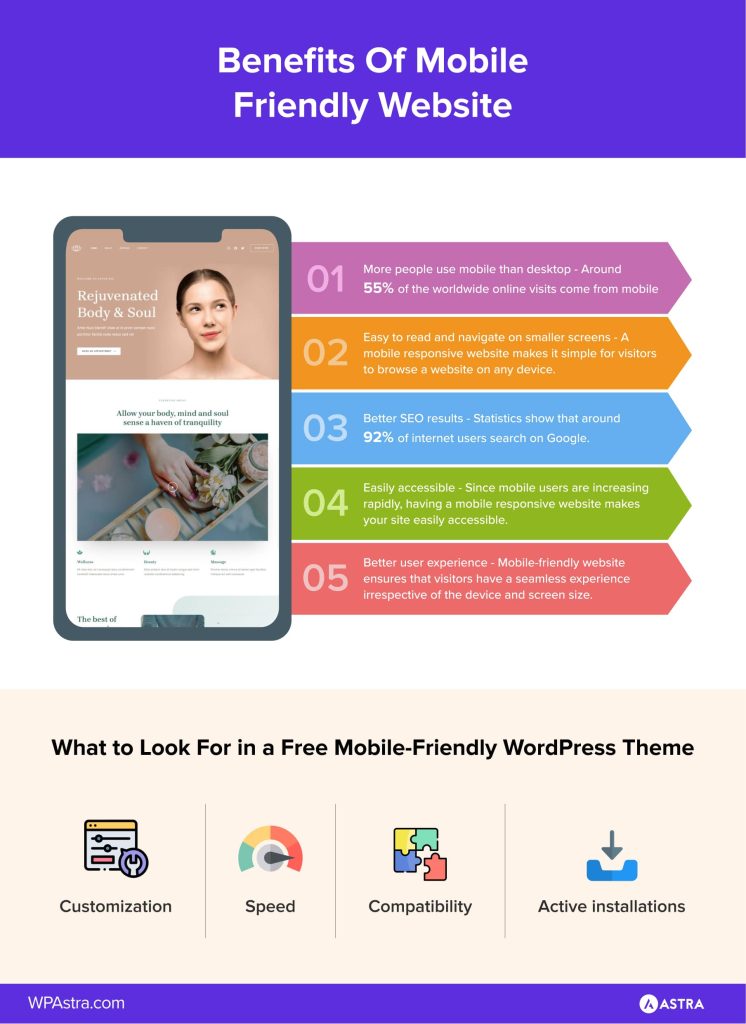Control Search Results with Next-Level Mobile Optimization Techniques
Control Search Results with Next-Level Mobile Optimization Techniques
Blog Article

The Ultimate Guide to Mobile Optimization: Techniques for Enhancing Internet Site Performance on Smartphones and Tablets
The techniques for boosting web site efficiency on mobile systems go beyond simple adjustment; they encompass a detailed technique that entails responsive style, rate optimization, content techniques, and customer experience improvements. By diving into the ins and outs of mobile optimization, businesses can not only fulfill individual expectations but likewise stay ahead in an affordable electronic landscape.
Relevance of Mobile Optimization
Mobile optimization plays a critical role in boosting individual experience and driving conversion rates in the ever-evolving electronic landscape. With the enhancing use of smart devices and tablets for browsing the web, ensuring that internet sites are maximized for mobile phones has ended up being imperative for services - Mobile Optimization. A mobile-optimized web site not just adjusts effortlessly to different screen sizes however likewise tons promptly, supplying users with a smooth and enjoyable searching experience
In today's busy world, users expect instant accessibility to info on the go. A website that is not optimized for mobile phones threats losing prospective clients as a result of slow down filling times or a bad individual interface. By spending in mobile optimization, organizations can satisfy the needs of their mobile audience, resulting in greater involvement and enhanced conversions.
Additionally, internet search engine like Google prioritize mobile-friendly web sites in their positions, making mobile optimization important for improving exposure and bring in natural web traffic. Mobile Optimization. In general, the significance of mobile optimization can not be overemphasized, as it straight influences individual contentment, conversion rates, and general service success in the digital world
Responsive Layout Strategies
Implementing receptive layout strategies makes certain that websites dynamically change their layout and content based on the individual's tool display size, offering a constant user experience across various systems. One of one of the most typical methods utilized in responsive style is creating fluid grids that allow content to resize proportionally to the display dimension. This guarantees that aspects on the page preserve their family member spacing and setup, enhancing the viewing experience for users on various devices.
Additionally, utilizing versatile photos that can scale with the dimension of the viewport assists prevent photos from being chopped or misshaped on smaller screens. CSS media questions play an important function in responsive style by enabling designers to use specific designs based upon the device characteristics such as display size, elevation, and orientation. By leveraging media queries, internet sites can adjust their layout and layout to fit smartphones, tablet computers, and desktop screens flawlessly.
Incorporating responsive layout techniques not just improves customer experience however likewise adds to enhanced internet search engine rankings, as internet search engine like Google prioritize mobile-friendly web sites in their mobile search over at this website engine result. By accepting responsive style, internet sites can accommodate the diverse needs of individuals accessing material on a range of tools, inevitably driving engagement and conversions.
Speed and Performance Optimization

One secret method is enhancing images and multimedia material to reduce file sizes without endangering high quality. Pressing pictures, leveraging contemporary image styles like WebP, and careless anchor packing offscreen images are effective approaches to accelerate load times (Mobile Optimization). Minimizing HTTP demands, leveraging browser caching, and reducing web server action times are crucial actions in improving performance.
Applying a content delivery network (CDN) can likewise significantly boost internet site rate by distributing content across several servers internationally, minimizing latency for customers accessing the website from various areas. Prioritizing essential above-the-fold content and delaying non-essential manuscripts can further boost viewed performance. By concentrating on speed and efficiency optimization, internet sites can deliver a seamless and satisfying individual experience on smart phones.
Mobile-Friendly Material Methods
Mobile-friendly material approaches involve tailoring the discussion of info to suit the smaller displays and on-the-go nature of mobile phone and tablet computer individuals. Furthermore, damaging up web content right into much shorter paragraphs and making use of bullet points can aid boost readability and make it easier for users to eat info swiftly.
Including appealing visuals, such as pictures and video clips optimized for mobile watching, can additionally boost the overall customer experience. These visuals ought to matter, top quality, and tons swiftly to avoid customers from shedding rate of interest. Integrating interactive elements go to these guys like quizzes, surveys, or studies can enhance user interaction and motivate energetic participation.
Customer Experience Enhancements
Structure on the foundation of mobile-friendly content techniques, enhancing user experience involves enhancing every touchpoint to make sure seamless communication and satisfaction for mobile customers. One crucial element of enhancing user experience on mobile phones is guaranteeing quick packing times. Individuals anticipate websites to load promptly on their mobile phones and tablet computers, and any type of delays can lead to disappointment and raised bounce prices. Executing responsive style is another key variable in boosting customer experience. Responsive design ensures that web sites adapt to numerous display sizes and resolutions, offering a consistent and easy to use experience across various gadgets.
Along with speed and responsive design, streamlining navigation is crucial for a favorable user experience. Clear and intuitive navigating menus, famous search bars, and strategically put call-to-action buttons can aid customers quickly locate what they are seeking on a mobile site. Optimizing forms for mobile users by lessening the variety of fields and utilizing auto-fill functions can additionally enhance the general user experience. By focusing on these individual experience improvements, sites can properly engage and maintain mobile site visitors.
Verdict
In verdict, mobile optimization is critical for improving web site performance on smartphones and tablets. By applying receptive style strategies, enhancing rate and performance, creating mobile-friendly content, and enhancing customer experience, companies can effectively reach and engage with their mobile audience. It is vital for web sites to adjust to the raising mobile usage patterns in order to stay affordable in the electronic landscape.
Report this page